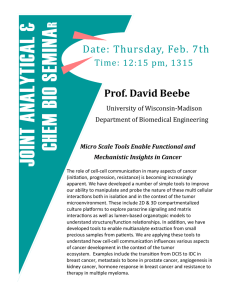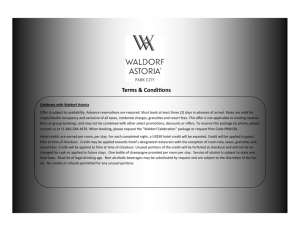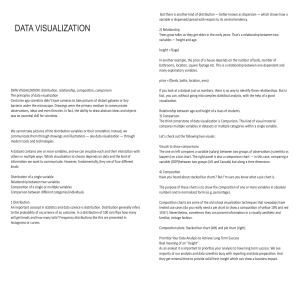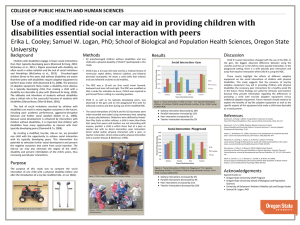Document 12148222
advertisement
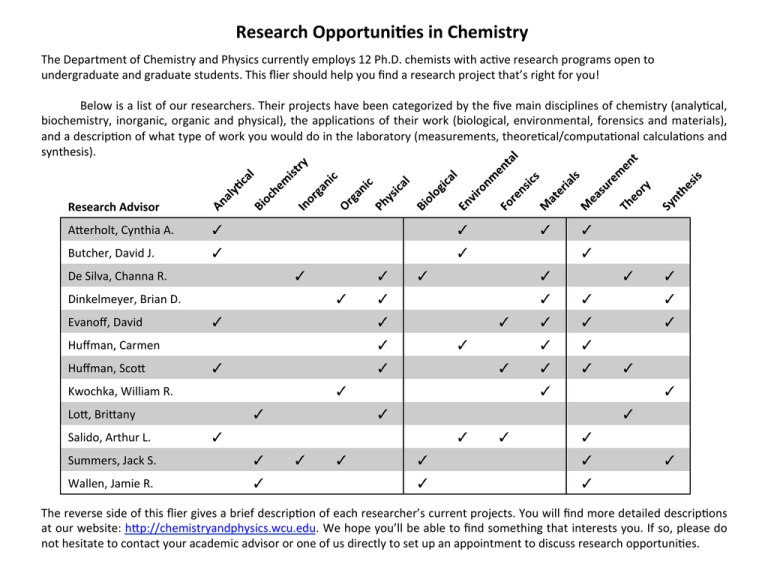
Research Opportuni0es in Chemistry The Department of Chemistry and Physics currently employs 12 Ph.D. chemists with ac;ve research programs open to undergraduate and graduate students. This flier should help you find a research project that’s right for you! Below is a list of our researchers. Their projects have been categorized by the five main disciplines of chemistry (analy;cal, biochemistry, inorganic, organic and physical), the applica;ons of their work (biological, environmental, forensics and materials), and a descrip;on of what type of work you would do in the laboratory (measurements, theore;cal/computa;onal calcula;ons and synthesis). Research Advisor ALerholt, Cynthia A. ✓ ✓ Butcher, David J. ✓ ✓ De Silva, Channa R. ✓ Dinkelmeyer, Brian D. Evanoff, David ✓ ✓ ✓ Huffman, ScoL ✓ ✓ ✓ ✓ Kwochka, William R. ✓ ✓ LoL, BriLany Salido, Arthur L. ✓ ✓ ✓ ✓ Wallen, Jamie R. ✓ ✓ ✓ ✓ ✓ ✓ ✓ ✓ ✓ ✓ ✓ ✓ ✓ ✓ ✓ ✓ ✓ ✓ ✓ ✓ ✓ ✓ ✓ Summers, Jack S. ✓ ✓ ✓ ✓ Huffman, Carmen ✓ ✓ ✓ ✓ ✓ ✓ ✓ ✓ The reverse side of this flier gives a brief descrip;on of each researcher’s current projects. You will find more detailed descrip;ons at our website: hLp://chemistryandphysics.wcu.edu. We hope you’ll be able to find something that interests you. If so, please do not hesitate to contact your academic advisor or one of us directly to set up an appointment to discuss research opportuni;es. Cynthia A7erholt analy%cal David Evanoff We study pheromones used for ma;ng disrup;on as an alterna;ve to the use of pes;cides. We also measure rheological proper;es of aqueous emulsions used as carriers for the controlled release of pheromones. David J. Butcher analy%cal Carmen Huffman Our research involves iden;fying and quan;fying chemical compounds in plants to characterize both their resistance to pollutants and infec;on and their viability for phytoremedia;on, the removal of toxic substances from soil. Channa R. De Silva inorganic Research is focused on synthesis, characteriza;on, and computa;onal studies of inorganic complexes and nanopar;cles with biomedical interest. We perform toxicological and an;microbial studies of the designed materials. Brian D. Dinkelmeyer organic Our group studies mechanisms of photoinduced reac;ons that occur within crystal structures using x-­‐ray diffrac;on, infrared spectroscopy and other advanced measurement techniques. analy%cal Bri7any Lo7 We synthesize new types of metallic nanostructures and study these structures’ unique interac;ons with light. We also fabricate nanostructure assemblies for sensing and energy harves;ng/conversion applica;ons. physical Arthur L. Salido We inves;gate the rela;ve strengths of nocovalent interac;ons. Example systems include heavy metal ions bound to natural product substrates (such as peanut hulls) for environmental remedia;on purposes. Sco7 Huffman analy%cal organic Our research focuses on the use of specific interac;ons between Lewis bases (like nitrogen atoms) and Lewis acids (boron atoms). Using these aLrac;ve interac;ons, we can assemble small molecules into larger molecular systems. analy%cal Our research aims to develop new methods to determine biologically-­‐significant natural products in plants. Dr. Salido has worked with natural products companies and is interested in commercial aspects of natural products research. Jack S. Summers Our group focuses on the development of non-­‐ or minimally destruc;ve chemical characteriza;on methodologies of historically important objects such as poLery, tex;les and pain;ngs. William R. Kwochka biophysical Our research consists of computa;onal inves;ga;ons of biological macromolecules such as the protein/RNA assembly within the ribosome and circadian clock proteins called cryptochromes. inorganic Our research involves studying the proper;es of transi;on metal complexes that could lead to the ini;a;on and propaga;on of diseases. Jamie R. Wallen biochemistry Our research uses a variety of biochemical techniques to understand at the molecular level how mul;ple proteins communicate in order to accurately copy both the leading and lagging strands of DNA.

